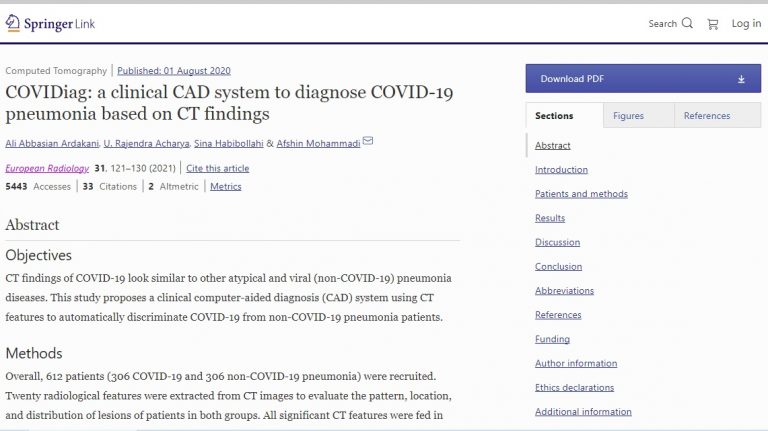
COVIDiag: a clinical CAD system to diagnose COVID-19 pneumonia based on CT findings
This study proposes a clinical computer-aided diagnosis (CAD) system using CT features to automatically discriminate COVID-19 from non-COVID-19 pneumonia patients…
Home / Publication / Page 2

This study proposes a clinical computer-aided diagnosis (CAD) system using CT features to automatically discriminate COVID-19 from non-COVID-19 pneumonia patients…
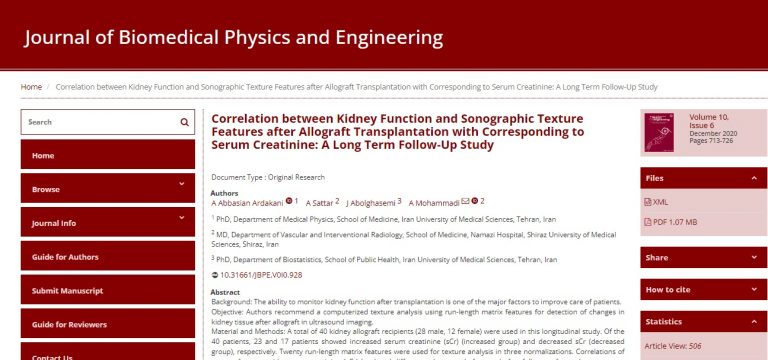
Authors recommend a computerized texture analysis using run-length matrix features for detection of changes in kidney tissue after allograft in ultrasound imaging…
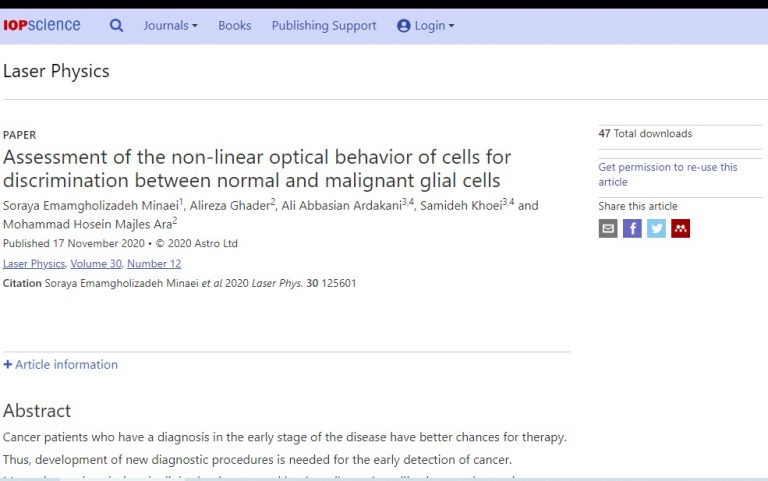
The key hypothesis behind this research was the application of the Z-scan method to progress the precision of detecting the C6 glioblastoma multiforme cancer cells and the OLN-93 normal glial cells….
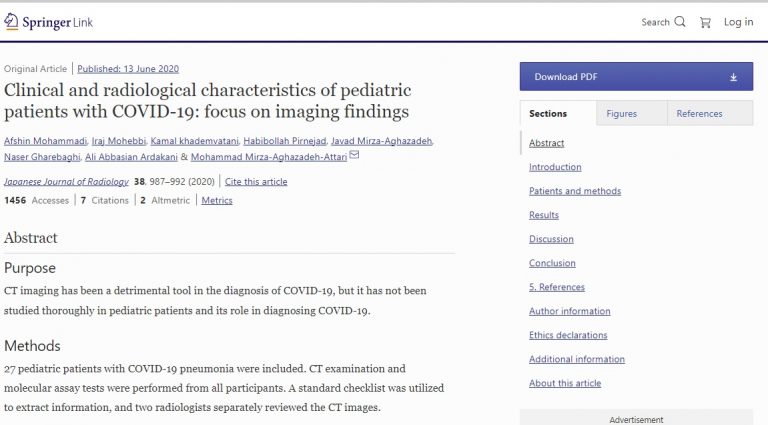
CT imaging has been a detrimental tool in the diagnosis of COVID-19, but it has not been studied thoroughly in pediatric patients and its role in diagnosing COVID-19….
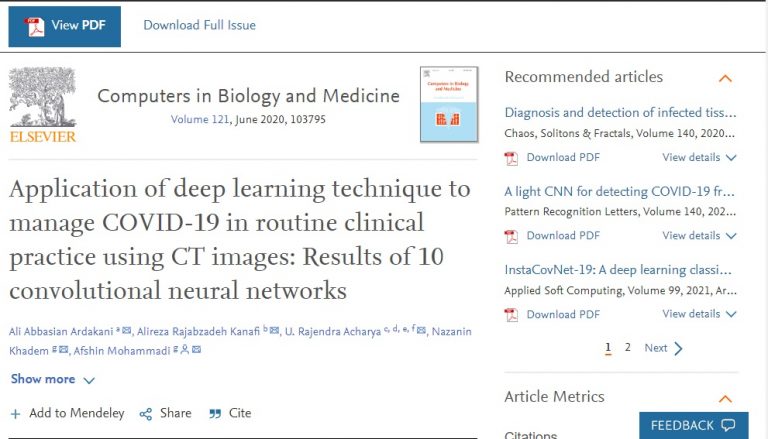
Computed tomography (CT) has thus far become a fast method to diagnose patients with COVID-19. However, the performance of radiologists in diagnosis of COVID-19 was moderate…
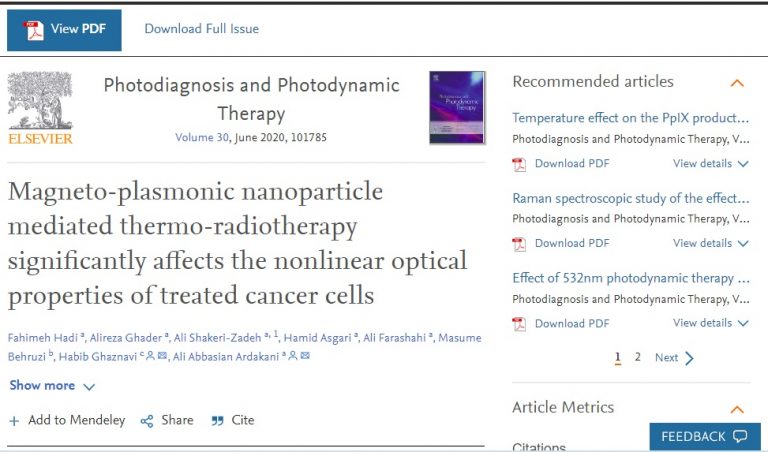
The aim of this study was to demonstrate the ability of nonlinear refractive (NLR) index as a predictor of breast cell damage caused by magneto-plasmonic nanoparticle based thermo-radiotherapy treatments…
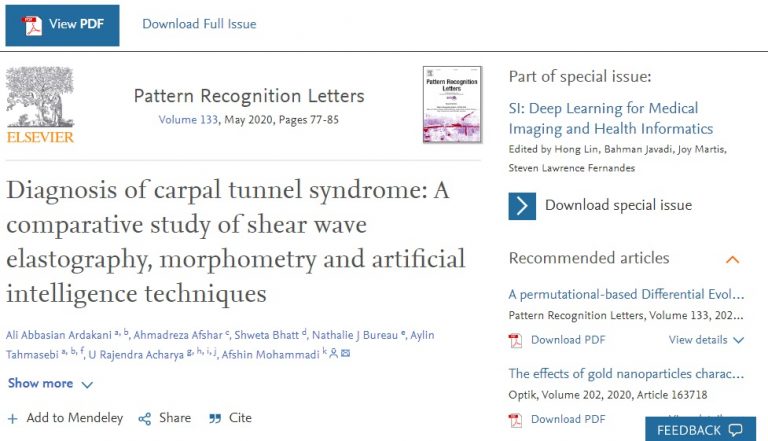
Additional investigations are needed to evaluate sonographic parameters and compare their performances with artificial intelligence (AI) methods. The aim of this study is to compare the performance of shear wave elastography, morphometry, and AI techniques to predict MN entrapment accurately…

In this paper, the effects of parameters related to gold nanoparticles (type, size, and concentration) and the laser parameters on spatiotemporal temperature pattern of an agar phantom during a photothermal therapy (PTT) procedure were modeled and then experimentally verified…
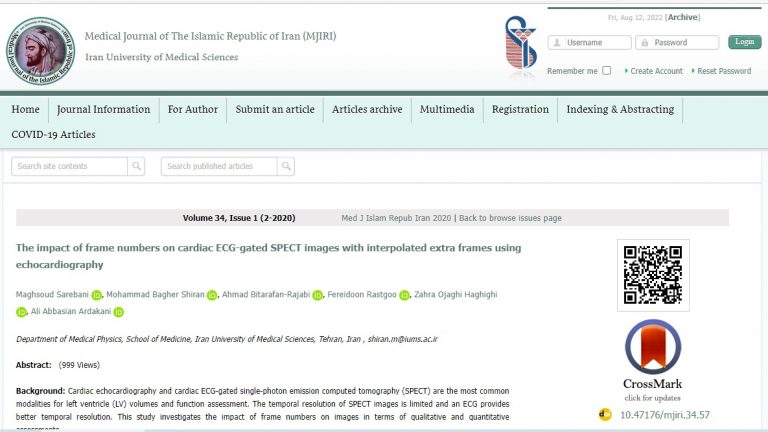
The temporal resolution of SPECT images is limited and an ECG provides better temporal resolution. This study investigates the impact of frame numbers on images in terms of qualitative and quantitative assessments…
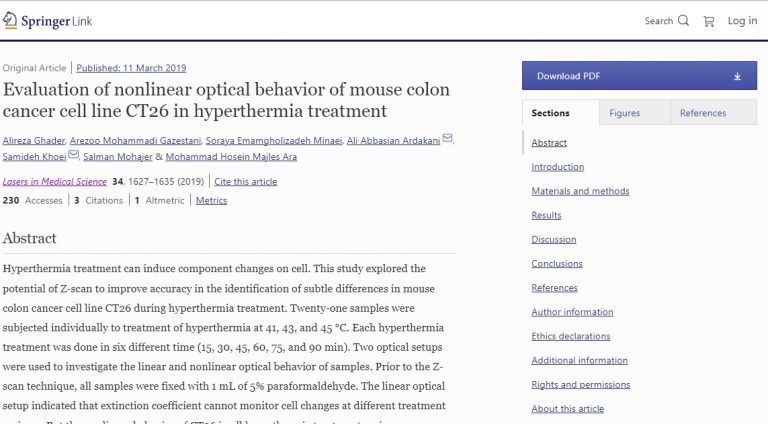
Hyperthermia treatment can induce component changes on cell. This study explored the potential of Z-scan to improve accuracy in the identification of subtle differences in mouse colon cancer cell line CT26 during hyperthermia treatment…
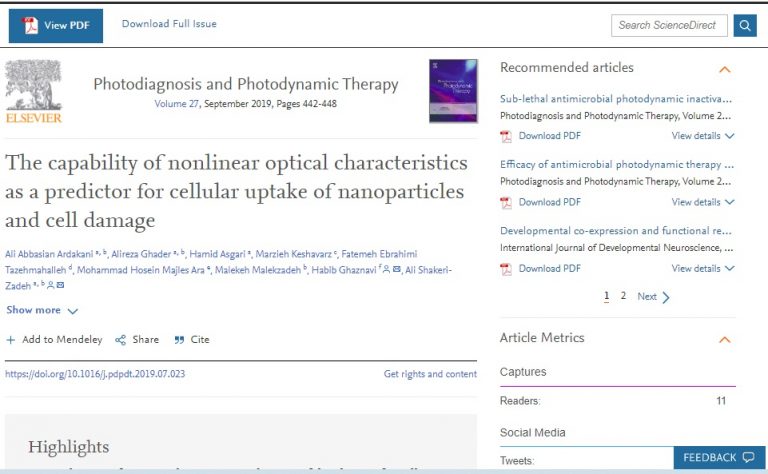
The aim of this study was to evaluate the potential of nonlinear optical characteristics of cancer cells using Z-scan technique to monitor the level of cellular uptake and cell damage caused by a nanotechnology based treatment modality…
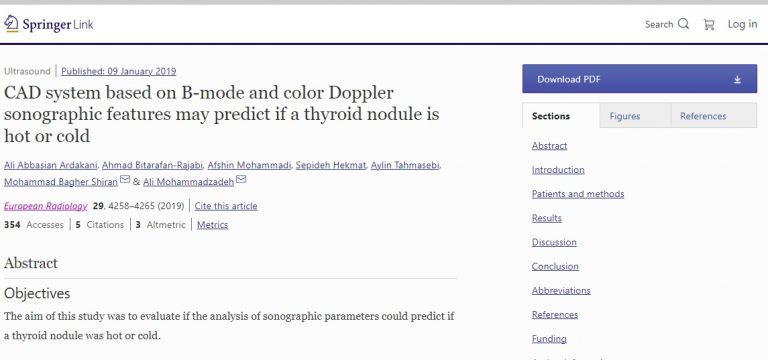
The aim of this study was to evaluate if the analysis of sonographic parameters could predict if a thyroid nodule was hot or cold…
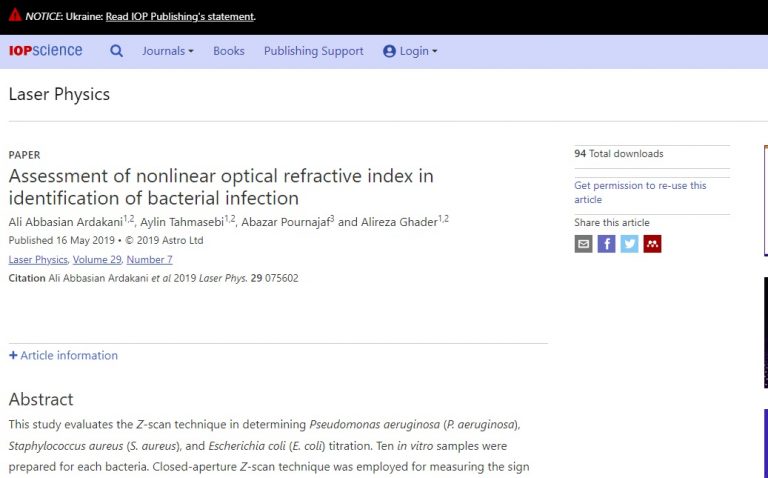
This study evaluates the Z-scan technique in determining Pseudomonas aeruginosa (P. aeruginosa), Staphylococcus aureus (S. aureus), and Escherichia coli (E. coli) titration. ..
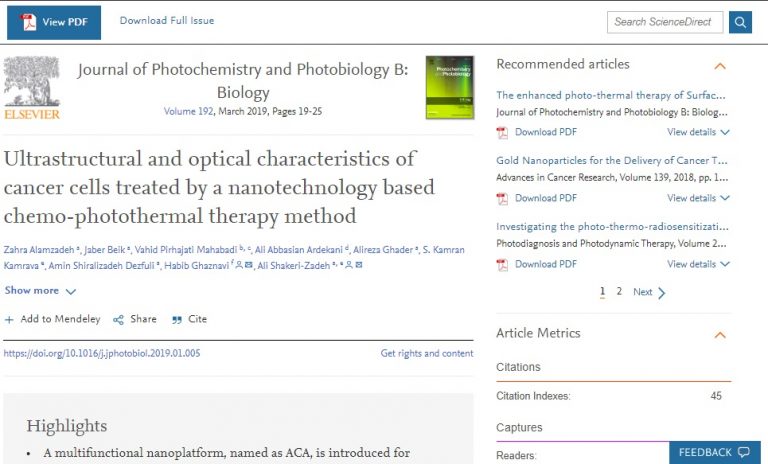
Z-scan technique was applied to measure the sign and magnitude of optical nonlinear refractive index (NLR)…
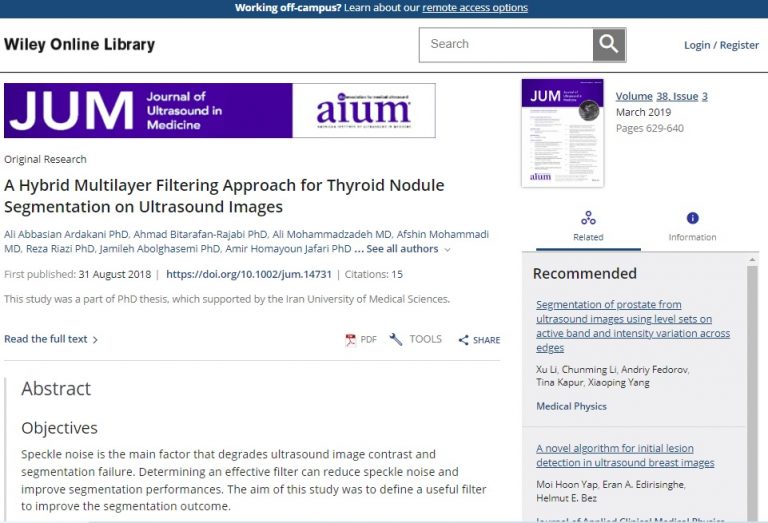
Determining an effective filter can reduce speckle noise and improve segmentation performances. The aim of this study was to define a useful filter to improve the segmentation outcome…

This study investigated the potential of a clinical decision support approach for the classification of metastatic and tumor-free cervical lymph nodes (LNs) in papillary thyroid carcinoma…
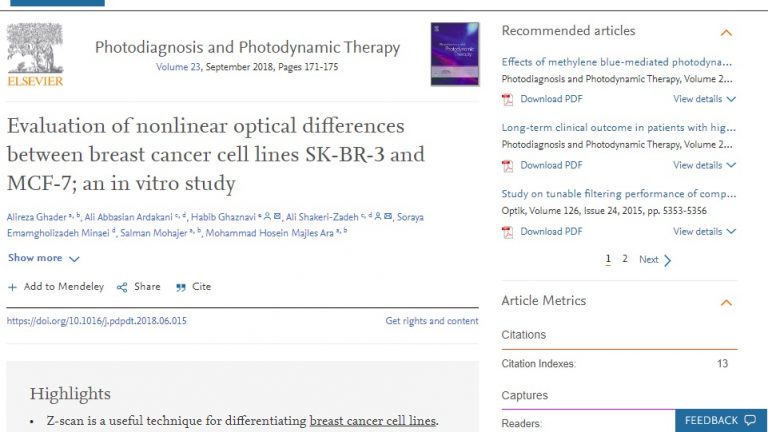
This study aimed to explore the potential of the Z-scan technique to improve accuracy in identifying SK-BR-3 and MCF-7 breast cancer cell lines…

This study investigated the potentiality of ultrasound imaging to classify hot and cold thyroid nodules on the basis of textural and morphological analysis…
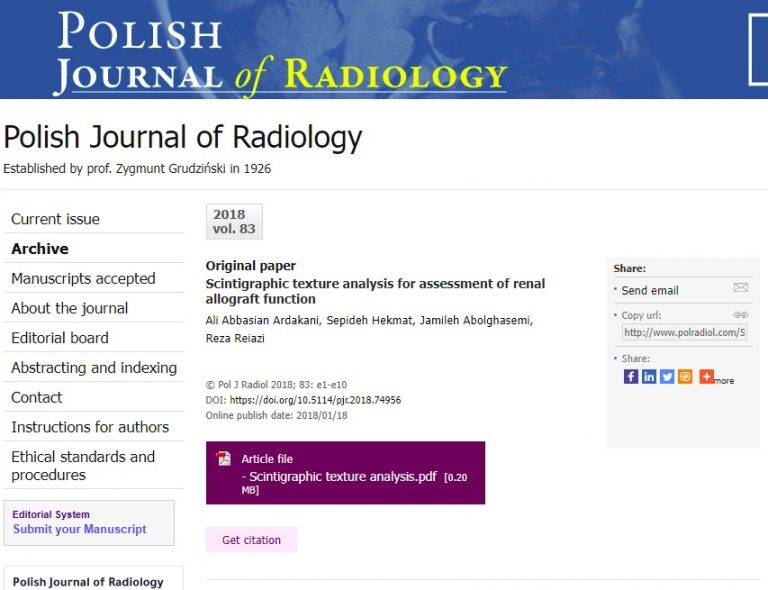
The aim of this study was to evaluate texture analysis (TA) in scintigraphic imaging to detect changes in kidney status after transplantation…
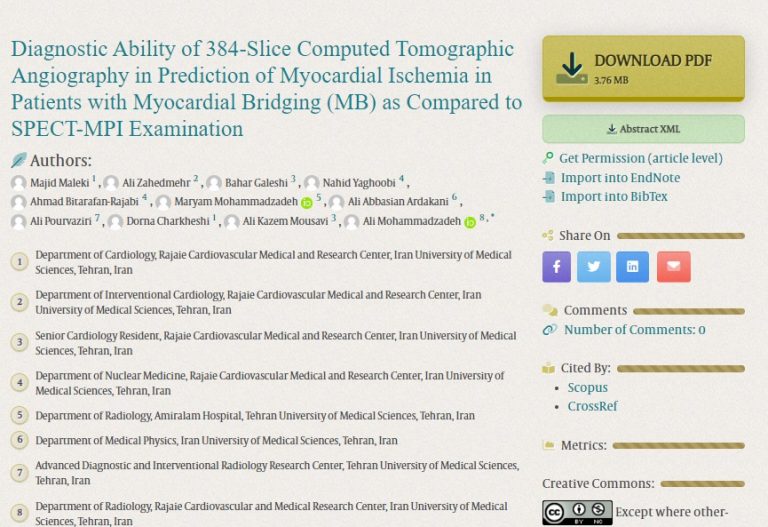
The aim of this study was to evaluate the ability of CCTA to predict myocardial ischemia in patients with MB…
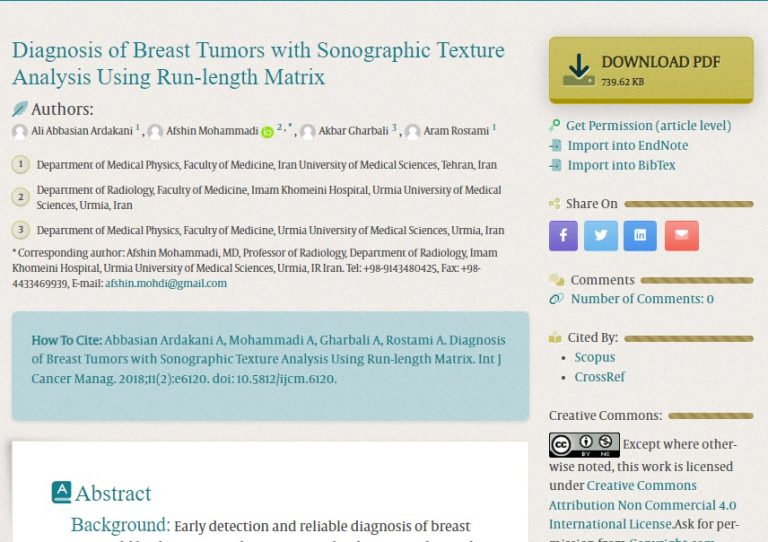
To explore the potential of texture analysis based on run-length matrix features for classifying benign and malignant breast tumors in ultrasound imaging…
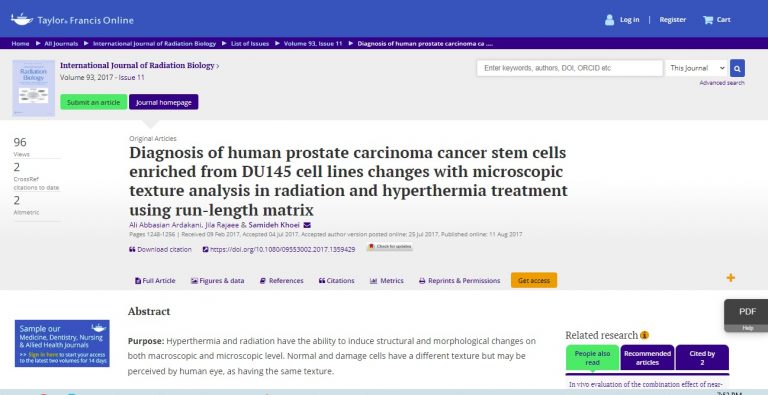
Hyperthermia and radiation have the ability to induce structural and morphological changes on both macroscopic and microscopic level. Normal and damage cells have a different texture but may be perceived by human eye, as having the same texture…
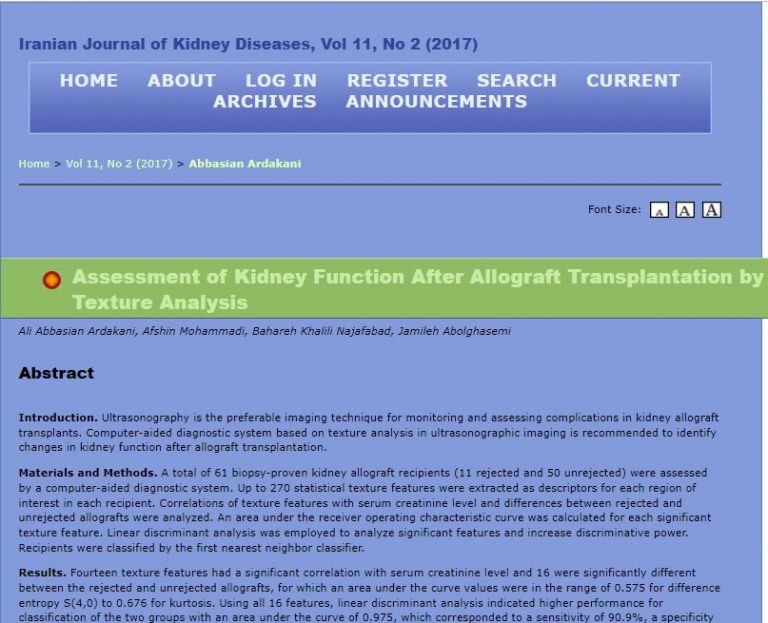
Computer-aided diagnostic system based on texture analysis in ultrasonographic imaging is recommended to identify changes in kidney function after allograft transplantation…
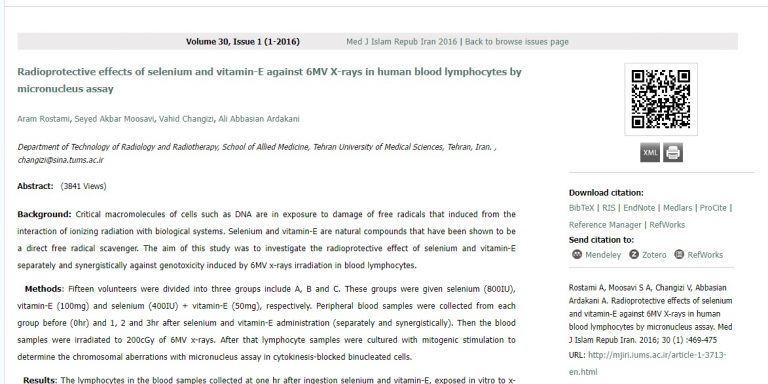
The aim of this study was to investigate the radioprotective effect of selenium and vitamin-E separately and synergistically against genotoxicity induced by 6MV x-rays irradiation in blood lymphocytes…